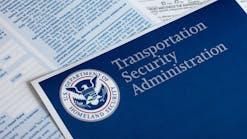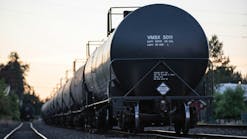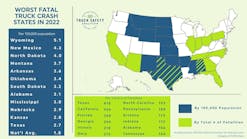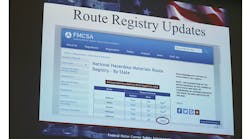Latest from Regulations
Tanknology expands fuel quality services
FMCSA to award CMV safety grants
THE mission of the Hazardous Materials Division at the Federal Motor Carrier Safety Administration (FMCSA) is to reduce the number of serious highway incidents and fatalities that involve hazardous materials. In addition, the division is charged with developing programs that enhance safety and security.
Paul Baumgardner, chief of the Hazardous Materials Division at FMCSA, provided an update on the latest developments at the division during the National Tank Truck Carriers Safety and Security Council Annual Meeting held June 12-14 in Reno, Nevada.
Baumgardner stated with a review of the Hazardous Materials Route Registry. Available online at the FMCSA web site (www.fmcsa.dot.gov) the has been expanded and thoroughly updated. Route updates can be uploaded via Excel spreadsheet, and route maps can be viewed online.
Baumgardner returned to a theme he has addressed at other meeting over the past year or so: Hazardous materials safety permits are needed for anhydrous ammonia described as UN1005 ammonia, anhydrous 2.3 poison inhalation hazard or toxic inhalation hazard, Zone D.
A hazardous materials safety permit is not required for anhydrous ammonia in domestic transportation and described as UN1005 ammonia, anhydrous 2.2 inhalation hazard.
“Neither a hazardous materials safety permit, nor a temporary HMSP will be issued to a motor carrier that does not intend to actively transport materials requiring an HMSP,” Baumgardner said.
“If you hold an HMSP, but no longer actively transport materials requiring an HMSP, contact FMCSA for removal from the HMSP program. You cannot remove yourself online. You are welcome to reapply for an HMSP at any time if you plan to haul permit-required hazmat in the future.”
The issue came up when FMCSA officials reviewed the HMSP database and found that 245 motor carriers had an HMSP just for transporting anhydrous ammonia. “We told them the options, and we found out that there was a downside for those who selected the domestic transport option,” Baumgardner said. “I’s the law of unintended consequences.”
Manufacturers and shippers were now saying: ‘Where’s your hazmat safety permit?’ The carriers were saying: ‘We don’t need it.’ The shippers said, ‘If you want to take our stuff, you do.’ So the shippers are now turning away carriers that don’t have the hazmat safety permit.”
Regarding the 235 carriers that kept their hazmat safety permits, FMCSA’s assumption is that they’re doing international shipments, according to Baumgardner.
“The downside there is that if you make it onto the enhanced oversight list, we have to do a comprehensive investigation of you,” he said. “If we go after one of those carriers, and we say, ‘But you’re doing domestic transportation of anhydrous; you don’t need a hazmat safety permit,’ we are going to pull that permit and not do the comprehensive investigation and let you go on your own. So you may lose your permit that way. Somebody who’s just getting into the business might say, ‘I need that permit.’ Sorry, the regulation says we issue these permits only to people who require it; not just those who want it.”
Baumgardner recapped several issues related to cargo tank testing and inspection. Incorporated as part of an FMCSA study, the issues are: Roadside identification of cargo tank testing and inspection facilities, cargo tank VINs (vehicle identification numbers) for tracking, and adequacy of mobile cargo tank testing facilities.
“The first two phases are near completion, Baumgardner said. “Phase 3, mobile testers, is in progress.”
The push for more oversight of cargo tank testing and inspection facilities came from recommendations made by the National Transportation Safety Board.
One recommendation called for implementation of a compliance program for cargo tank facilities to enhance enforcement of the cargo tank requalification procedures specified by Title 49 CFR Part 180, subpart E.
A second recommendation calls for FMCSA to work with the Pipeline and Hazardous Materials Safety Administration to incorporate by reference the registered inspector training requirements of the existing industry cargo tank inspection code into the hazardous materials regulations.














